The Sikhs in North America
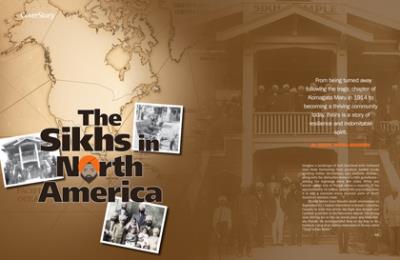
From being turned away following the tragic chapter of Komagata Maru in 1914 to becoming a thriving community today, theirs is a story of resilience and indomitable spirit.
Imagine a landscape of lush farmland with turbaned men busy harvesting their produce, loaded trucks sporting Indian decorations, and roadside dhabas— along with the distinctive dome of a Sikh gurudwara— dotting the highways every few miles. While you would expect this in Punjab where a majority of the approximately 26-million global Sikh population lives, it is also a common scene in some parts of North America’s western coast.
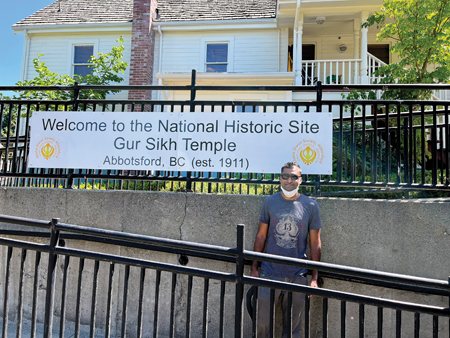
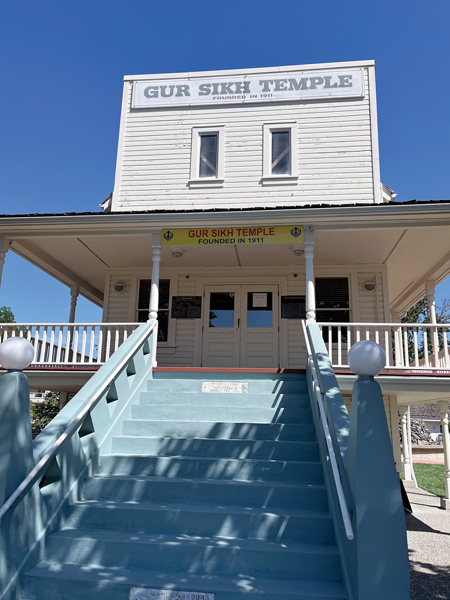
The Gur Sikh Temple, constructed in 1911, is a Nationally Designated Historical Site.
Shortly before Guru Nanak’s death anniversary on September 22, I visited Abbotsford in British Columbia, Canada, to write this article. My flight was delayed and I arrived quite late at the Vancouver airport. The young man driving me to the car rental place was from Patiala, Punjab. He recommended that on my way to Abbotsford, I stop at an Indian restaurant in Surrey called “Tasty Indian Bistro.”
I took him up on his recommendation, and as soon as I entered the Bistro, it was like being transported to Punjab. The servers hailed from Ludhiana, Jalandhar, or Hoshiarpur, and almost every customer was Sikh. Although it was 11 pm on a weekday, the party was only just beginning. Throngs of young Sikhs kept coming in and bantering with each other in Punjabi.
Close by is the Payal Business Centre. The plaza is a less chaotic, cleaner version of Delhi’s Chandni Chowk and is home to over 300 South Asian businesses.
Today, British Columbia is the only administrative division outside South Asia where Sikhism is the second most practiced religion. Surrey is the community hub where Sikhs comprise of 23 percent of the population of the town. The Gur Sikh Temple in Abbotsford, housed in a small wooden building on a busy thoroughfare, was constructed in 1911 and is North America’s oldest gurudwara. It is the only gurudwara outside India and Pakistan that is a Nationally Designated Historical Site.
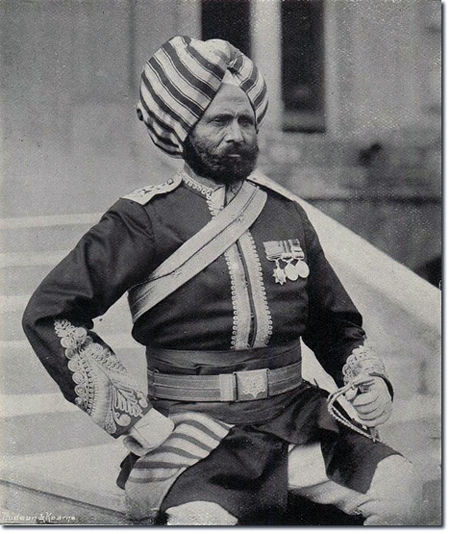
The Gurudwara was constructed using lumber from the mills in which Sikh pioneers worked. In front of it are two statues of Sikh men on horseback, symbolizing their first glimpse of British Columbia as they traveled through the land.
In 2011, on the Gurudwara’s 100th anniversary, the then prime minister, Stephen Harper, inaugurated a small museum in the basement that illustrates the Gurudwara’s early history. Placards explaining the struggles faced by the early pioneers and the unfair immigration laws are prominently, even proudly, displayed. As becomes clear from the history on display, this journey of Sikh migration to North America was not always easy. It is a demonstration of the resilient and indomitably positive spirit of the Sikh immigrants that traces its roots back to the beginning of the 20th century.
[Right] Kesar Singh, the person credited with being the first Sikh settler in Canada.
The person credited with being the first Sikh settler in Canada is Kesar Singh, a Risaldar Major in the British Army. Though illiterate, his dedication and courage led to his becoming a highly decorated officer serving as Queen Victoria’s personal guard, chosen to represent his regiment at Queen Victoria’s 1897 diamond jubilee celebration in London and Canada. Within a few years, the first group of Sikh pioneers arrived in Abbotsford to work on farms and in the lumber industry, growing to approximately 1500 Sikhs by 1906.
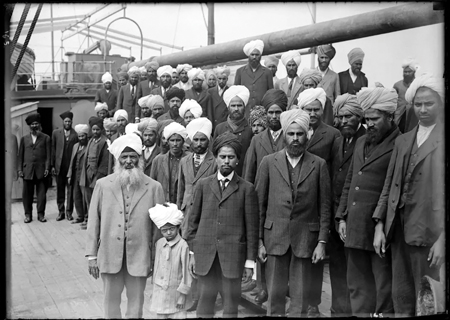
Some of the Sikhs on Komagata Maru. The ship was not allowed to dock, and after several months of ineffective legal battles and political demonstrations, a Canadian Navy ship escorted Komagata Maru out to sea to begin its return voyage to India.
Karin Leonard, an anthropologist who specializes in the South Asian diaspora, and a former professor at the University of California: Irvine, has authored several books including The South Asian Americans and Making Ethnic Choices: California’s Punjabi Mexican Americans. According to Dr. Leonard, “The primary reasons behind migration [from Punjab] were population pressure, subdivision of land, and rural debt. The land fragmentation in Punjab increased as mortality decreased and more sons survived to inherit equal shares of the patrimony; thus, the sons of cultivators took up military service or wage labor abroad.” As a result, the Punjabi pioneers to North America were all men, many of whom belonged to landowning castes or had served in the military overseas.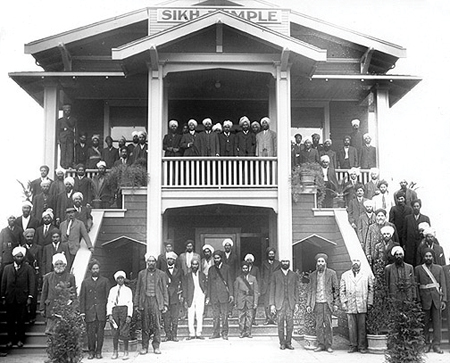
[Left] Gurudwara Sahib Stockton, U.S.A.’s first Sikh temple, was founded in 1912.
The pioneers face a racist backlash
Unfortunately, and perhaps inevitably, the influx provoked an anti-Sikh sentiment among the local residents. A group called British Columbia Exclusionists called for an all-out immigration restriction in response to the growing influx of the Sikh immigrants. In 1908, Canadian ministers issued the Continuous Journey Order which prohibited immigrants who did not come to Canada on a continuous voyage from their homeland. Erika Lee, a history professor at the University of Minnesota, writes in her book, The Making of Asian America, “Since there was no direct steamship service between India and any Canadian port, the [ruling] effectively barred South Asians without exception.” The racist goal of the hastily passed immigration law was very clear considering that Canada was welcoming large numbers of immigrants from Europe at the time.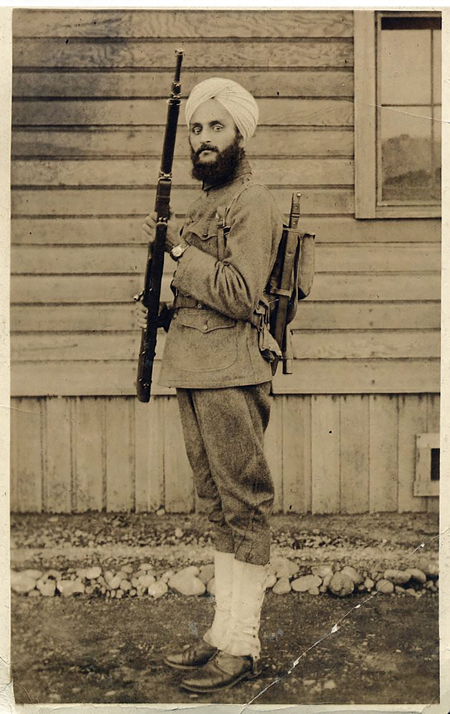
The tragedy of Komagata Maru
Aware that Canadian exclusionary rules prevented Punjabis from immigrating to Canada, Gurdit Singh Sandhu, a Sikh businessman from Singapore, wanted to hire a ship to sail from Calcutta to Vancouver as a challenge to Canada’s discriminatory practice. Unable to do so, Sandhu chartered the ship, Komagata Maru, to sail from British Hong Kong via Shanghai and Yokohama, picking up Indian passengers at each port, so that it arrived in Vancouver with 376 passengers—337 Sikhs, 27 Muslims, and 12 Hindus—all of whom were British subjects.
Sandhu’s enterprise was under scrutiny from the beginning. In fact, Sandhu was arrested in Hong Kong for selling tickets to a voyage that was deemed unlawful. This delayed the departure for several months. In any case, Canadian immigration agents were prepared and waiting. Komagata Maru was not allowed to dock, and passengers were not allowed to disembark. After several months of ineffective legal battles and political demonstrations, a Canadian Navy ship escorted Komagata Maru out to sea to begin its return voyage.
[Right] The 1923 case of Bhagat Singh Thind V. United States denied naturalization to Indians based on race.
When the Komagata Maru finally returned to a port near Calcutta, its reception was equally frosty. According to The Making of Asian America, the passengers wanted to disembark and make a religious procession to Calcutta, but British police refused fearing revolutionary unrest. The passengers were ordered to board a special train directly to Punjab. In the resulting riot, 26 people were shot dead.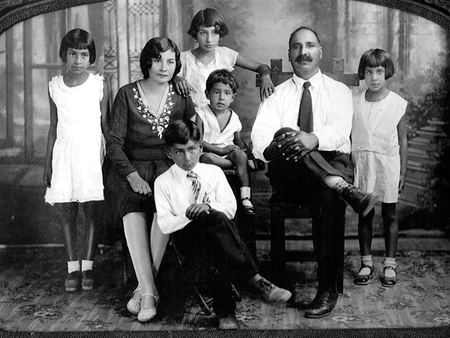
The Komagata Maru marks the inauspicious beginning of Indo-Canadian and Indo-American relations, and is a far cry from the prevalence of Sikhs today in communities up and down the Pacific Coast.
[Left] The 1923 case of Bhagat Singh Thind V. United States denied naturalization to Indians based on race.
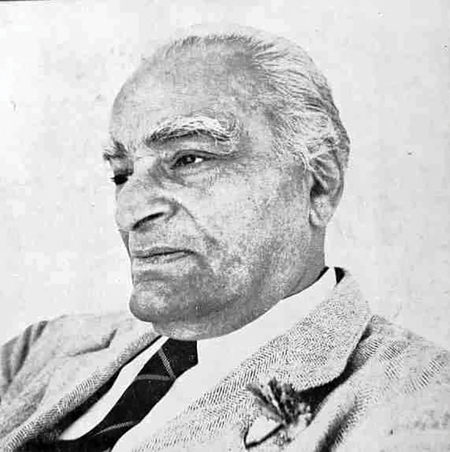
The Sikh migrants turn to the U.S.
As Canada tightened immigration requirements for Punjabis, most of them came to the U.S. Approximately 85 percent of the early Punjabi immigrants to the United States were Sikhs, and another 10-12 percent were Muslims. According to Sikhpioneers.org, many of them worked on Northern California’s Western Pacific Railways and on modern interstate 80 which connects Oakland and Salt Lake City.
During this time, California’s growing agricultural industry provided ample opportunities for the Punjabi men, and the pioneers dispersed throughout rural California where they established permanent homes. Wherever they settled, the Punjabis maintained strong community ties. As The Making of Asian America, states, “[Punjabis] built important community, religious, and political organizations that provided communal support and a way to practice their faith.”
The Pacific Coast Khalsa Diwan Society was formed in the early 1900s in Stockton. In 1912, Jaswala Singh, a potato farmer, leased a 500-acre ranch on which Gurudwara Sahib Stockton, U.S.A.’s first Sikh temple, was founded. The Making of Asian America explains how the Gurudwara helped immigrants connect with one another, find employment and housing, and even provided legal assistance to detained immigrants.
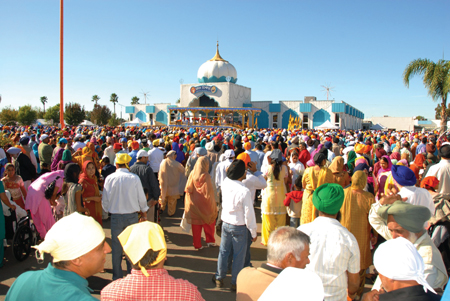
[Top] Yuba City’s Nagar Kirtan (Sikh Parade). (Photo: pioneeringpunjabis.ucdavis.edu)
Legally underprivileged
According to Dr. Leonard, “Legal constraints and social stereotypes based on race determined the conditions the Punjabis encountered.” Under the 1913 California Alien Law Act, aliens were ineligible for citizenship and from owning agricultural land. Four years later, the 1917 Immigration Act banned all Asian immigrants. The landmark Supreme Court decision barring South Asians from attaining naturalized U.S. citizenship was the 1923 case of Bhagat Singh Thind V. United States. The case revolved around Bhagat Singh Thind, a naturalized American citizen, who had entered the United States in 1923. He argued that as an Indo-Aryan, he was white as defined by the U.S. naturalization law. However, as quoted in The Making of Asian America, the Supreme Court responded, “The great body of our people recognizes the racial differences between Whites and South Asians, and instinctively reject that thought of assimilation of South Asians into White Americans.” Thus, Thind was denaturalized and forced to sell his property in San Francisco.
The Punjabi-Mexican ethnicity is born
Despite these heightened restrictions, Punjabi men decided to stay and create a family life. Dr. Leonard states that their “search for local brides was hampered by California’s laws that prohibited marriage between people of different races. Since Punjabis were generally classified as non-white, they were not given marriage licenses to marry white women in California.” During this time, there was an influx of Mexican families who were fleeing the Mexican Revolution and had settled across the United States border. Thus, many Punjabi farmers married Mexican women who were picking cotton in their fields.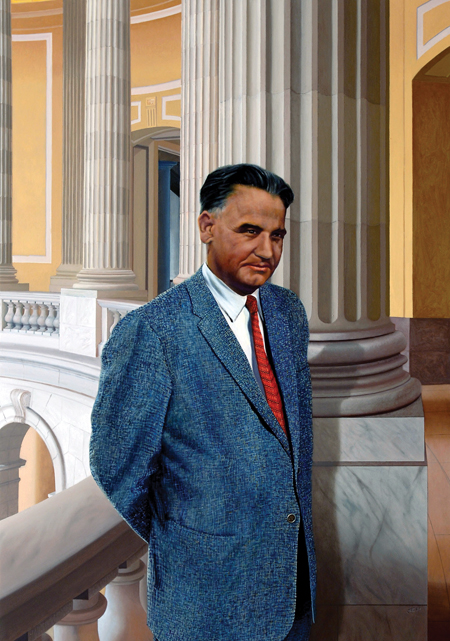
As a result, the Punjabi-Mexican ethnicity was born. This community was centered in California’s Central and Imperial Valleys, but also had members in Arizona, New Mexico, Nevada, Utah, and El Paso in Texas. At its peak, there were about 400 of these biethnic families.
Amelia Netarvala is one of the few surviving Punjabi-Mexicans. Her father arrived in San Francisco from Punjab in 1907. Born in El Paso, Texas, Netervala grew up in Arizona where her father grew cotton and melons. As was typical of most Punjabi-Mexicans, Netarvala was raised by her mother, a housewife, while her father toiled in the fields. Thus, the children’s upbringing reflected their predominant exposure to the Mexican culture.
In terms of religion, Punjabi-Mexican children were brought up as observant Catholics. Netervala states, “My father told my mother that it was best for us to be raised in Christianity rather than have no religion. There was no nearby gurudwara.” She continues, “During Guru Nanak’s birthday in fall, my father would bring us to California’s Imperial Valley Gurudwara where we would stay for four or five days. However, this was more cultural than religious.”
[Left] Dalip Singh Saund, the first Asian American in the U.S. Congress
The mother’s influence was further reflected in the language spoken at home. As South Asian Americans mentions, “Most children spoke Spanish with their mothers and Spanish or English with their fathers; few learned to speak Punjabi.” Netervala recalls, “I wanted my father to teach me Punjabi but he refused instead replying ‘I tried teaching it to your siblings but they laughed at the language.’”
Although Mexican culture dominated the household, the fathers expected home-cooked Punjabi food after a long workday. Netarvala states, “My father taught my mother how to make Indian food. Some popular dishes included rotis, aloo gobhi, bhindi, and daal along- side Mexican and American dishes such as steak and Mexican beans.”
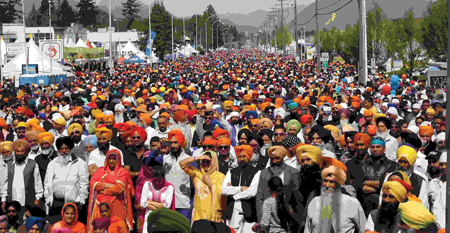
[Top] Khalsa Parade in Surrey. (Photo: globalnews.ca)
Sirdar J.J. Singh: The “one-man lobby” whose efforts opened up naturalization for Indians
The changing laws resulted in the stagnation of the Punjabi-Mexican community as Indian immigrants were eventually allowed to own land in their own names without relying on American-born children or wives. A central player in changing immigration laws in the U.S. was Sirdar J.J. Singh, a successful businessman and president of the India League of America, who lived in the U.S. from 1926 to 1959. I spoke with his son, Man Jit Singh, former CEO of Sony Pictures Home Entertainment. Singh recalled, “Many people called him the unofficial Ambassador for India. Gandhi Ji and my father exchanged many letters. He involved a very illustrious group of American democrats in India’s freedom struggle, and he was the central person in getting the Luce-Cellar Act passed in 1946.”

This Act allowed a quota of 100 individuals from the Philippines and 100 from India to immigrate each year. For the first time, Indians could naturalize as American citizens. In March 1951, Jagjit “JJ” Singh became the first Indian to be profiled in The New Yorker magazine. The article, titled “One-Man Lobby,” described him as someone who “seeks to interpret India to, and to further Indian causes in, this country.”
[Left] Preet Didbal, Mayor of Yuba City, is the nation’s first Sikh female mayor.
Dalip Singh Saund: The first Asian American in the U.S. Congress
Dalip Singh Saund was a strong proponent of minority citizenship rights and democratic ideals during this time. He became the first Asian American in the U.S. Congress when he served the 29th District of California from 1957 to 1963. Once elected to Congress, Saund traveled throughout Asia to garner support for the U.S. style of democracy. According to The Making of Asian America, he “used his own example of overcoming racial prejudice and achieving the American Dream to praise the power of change in democracies.” Saund is quoted as saying, “If Americans were prejudiced against Indians, how did I get elected by free vote of American people in most conservative California?”
Yuba City’s Nagar Kirtan
The 1965 Immigration and Naturalization law further emphasized the immigration of skilled workers and family reunification regardless of nationality. This growing influx of Indian immigrants further fueled the growth of Punjabi cultural resources. Didar Singh Bains, California’s “peach king,” was one of the main driving forces in keeping Punjabi culture alive. He used his wealth to organize various Sikh institutions and cultural events. Bains’ most notable cultural contribution is Yuba City’s annual Nagar Kirtan (Sikh Parade) on the first weekend of November. The Nagar Kirtan celebrates the installation of the Sri Guru Granth Sahib as the living Guru. This is one of the largest South Asian diaspora festivals and attracts nearly 100,000 guests from Canada, England, and India. The event begins with a weekend-long reading of the Granth; and on Sunday morning, a float supporting the holy text is followed by a large procession across 4.5 miles.
Resolute farmers, and now truckers too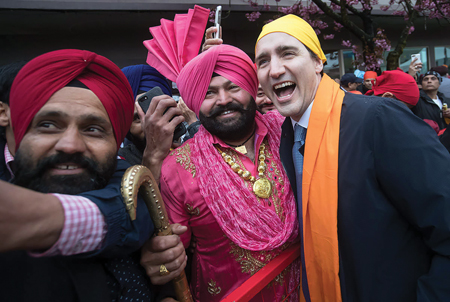
The Sikh community remains the lifeblood of California’s agricultural economy. As the older generation is beginning to age, some of their children feel duty-bound to continue their family tradition. The New York Times article, “I Can’t See Myself Doing Anything Else,” illustrates the example of Simranjit Singh who works on his father’s raisin and almond orchards in Central California. Singh believes that “whatever is passed to me from my father is so valuable that I would be a fool to throw it away. Farming will always be at the core of who I am.”
[Right] Prime Minister Justin Trudeau at a Vaisakhi event in Abbotsford. (Photo: Abbotsford News).
The nationwide demand for California-grown produce has fueled the growth of the trucking industry. Since the 1980s, Sikh immigrants have been increasingly taking over the industry as the older generation retires. According to the Los Angeles Times article, “Sikh Drivers are Transforming the US Truckers,” the I-5, I-80, and I-10 freeways are now dotted with Indian-American-owned businesses catering to truckers.
The nation’s first Sikh female mayor
In 2017, Preet Didbal became mayor of Yuba City. She is the nation’s first Sikh female mayor. A product of Yuba City’s Sikh community, Didbal aimed to leverage technology to bridge the gap between the older and younger generation. As she stated in her article, “Sikh Political Power Shows in the West,” “Often there’s a lack of communication between the younger members of our community and the elders who are closed to new ideas and thoughts.”
Strengthening communities through the Sikh value of selfless service
Sikhs are respected for their hard work ethic engrained from their roots in “the breadbasket of India.” Ever since the early 20th century, they have been the lifeblood of the various American industries which have been catering to a large population. The early pioneers’ stoicism allowed them to endure the brunt of racist and discriminatory laws as they strived to earn their place in the American society. In the process, many became leaders in the struggle for justice—both in the U.S. and in India. As Netervala states, “Many Indians who come for college do not want to associate with the early immigrants. However, these pioneers, with only a 3rd or 4th grade education, ultimately opened the door for future Indian immigration.”

Gurdwara Kalgidhar Darbar in Abbotsford.
During the pandemic, the Sikhs’ values of selfless service were particularly visible. One particular case that illustrates this is of a gurudwara in Los Angeles. During the pandemic, the gurudwara’s food pantry and hot meal program provided food and groceries for some of the neediest families in the city. The person I spoke to reflected, “Seva can be done now during the pandemic or when there is no pandemic. This is what we have been taught our whole life. As Sikhs, we have learned from our own history. Our Gurus sacrificed their own lives to help others, whether it was by giving money, food, or time. Money is not the only way to donate.”
At long last, the Sikh community’s contributions to Canada got recognized at a national level. In 2019, Canada’s Prime Minister, Justin Trudeau, publicly commended the Sikh community’s contributions to the Canadian society. He stated at Vancouver’s Khalsa Diwan Society, “The Sikh community is a part of Canada’s history. [They] have helped to build Canada for more than 120 years.” Sikh Canadians “serve their communities every single day whether as innovative local business owners or politicians of every political stripe. It is clear that the Sikh community enriches and strengthens our country.”
Nikhil Misra-Bhambri is a freelance journalist living in Los Angeles, California. He graduated in history from the University of Southern California (USC) and writes about relationships between cultures, cuisine, music, and history.
Enjoyed reading Khabar magazine? Subscribe to Khabar and get a full digital copy of this Indian-American community magazine.
blog comments powered by Disqus











